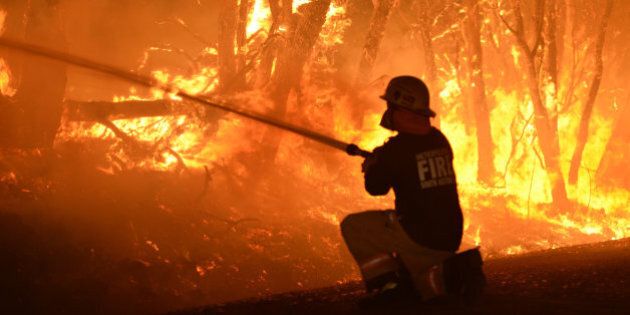
Summer is ending but firefighters are preparing for more months of hot, dry and dangerous weather as advocacy groups warn of fatigue setting in.
The Australian Climate and Firefighters Alliance members reported this year's fires came with hotter conditions, longer stretches of time actively fighting fires and no rest in sight.
Spokesman Paul Gray said the alliance was concerned firefighters would 'drop like flies' as conditions expected to remain dry for the next two months.
“Many firefighters are saying that the intensity of the heat they’re working in is worsening and that these fires are physically knocking them around more," Gray said.
"You get used to working in the heat, but it’s difficult to keep fighting fires continually in such a high level of heat.
"That’s when you start getting people dropping like flies from exhaustion or illness.”
Fire Brigade Employees Union president Darin Sullivan said firies were increasingly sending help interstate to relieve those on the front line.

A shed burns during the Adelaide Hills bushfires in January.
"The fires we are seeing of late are so catastrophic that fire services are being stretched to a point where they also need interstate firefighters to staff local fire stations,” Sullivan said.
“This happened in Victoria in 2009 and was reciprocated in NSW in 2014.
"Most recently, NSW was called on to send firefighters to Tasmania. Interstate firefighters were provided not only to help with the fire itself, but at one point in Tasmania the NSW."
In Western Australia the Association of Volunteer Bush Fire Brigades chief executive officer Tony Papafilis told HuffPost Australia volunteer firefighters were stretched.
"The Bureau of Meteorology has modelling that shows warmer periods at the start and end of the season, and then there's the hotter days with more intense heat and bushfire-conducive conditions," Papafilis said.
"Certainly in last five or six years we've had some huge fires that caused massive losses in Western Australia.
"Recently we lost a whole town which suggests we need to ask, are there enough resources available?
"We seem pretty good at dealing with one major fire but when there's two at the same time, we find we're stretched."
So far, during the 2015-2016 bushfire season:
- 8 lives have been lost;
- More than 700 properties (including 357 homes) destroyed;
- 630,000 hectares of land razed, including 11,000 hectares of world heritage listed wilderness in Tasmania;
- Tens of thousands of livestock killed;
- Three catastrophic bushfires declared for which insurance claims worth380 million have been lodged.
Source: Climate Media Centre